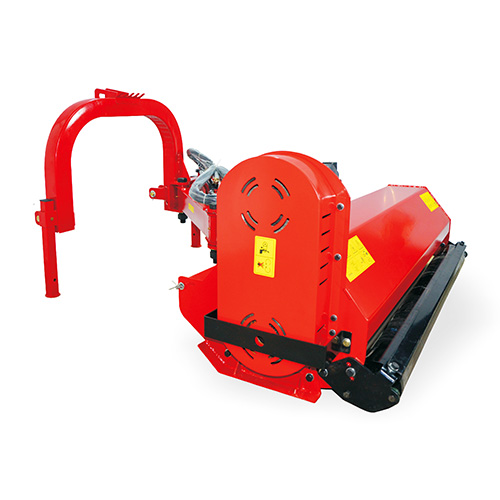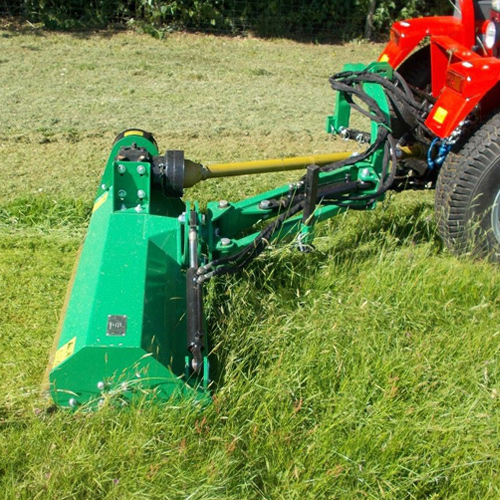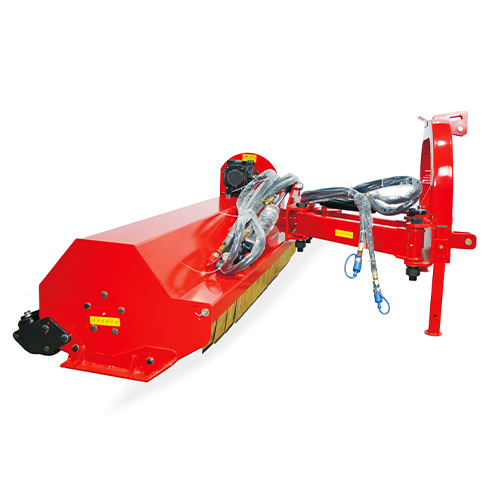Introduction
Flail mowers, also known as rotary mowers, are versatile and efficient tools for clearing vegetation and maintaining landscapes. They are commonly used in agriculture, forestry, and land management applications. With a wide range of available models and features, selecting the right flail mower for your specific needs is crucial for maximizing efficiency and productivity.
Types of Flail Mowers

Flail mowers are primarily classified into three types:
- Tractor-mounted flail mowers: Designed to be attached to the rear or front of a tractor, these mowers offer high power and productivity.These mowers are perfect for large-scale agricultural operations and are capable of handling tough and dense vegetation with ease. With their heavy-duty construction and wide cutting widths, they can cover a large area in a short amount of time, making them a valuable asset for any farming or landscaping business. Whether you need to maintain pastures, fields, or roadside ditches, these mowers are up to the task and will help you keep your property looking neat and well-maintained.
- Self-propelled flail mowers: These mowers are self-contained units that do not require a tractor. They are ideal for smaller areas and maneuverability.They are easy to operate and maintain, making them perfect for homeowners and small landscaping businesses. With their compact size and efficient cutting capabilities, these mowers are a great choice for anyone looking to keep their lawn looking neat and tidy.
- Hand-held flail mowers: Suitable for smaller areas and precise cutting, these mowers are carried and operated by hand.Perfect for maintaining a neat and tidy appearance, these hand-operated mowers are lightweight and easy to maneuver around obstacles in the yard. Their compact size makes them ideal for reaching tight spaces and edges that larger mowers may struggle to access. With their simple design and quiet operation, these mowers are a convenient choice for homeowners looking to keep their lawn well-trimmed without the hassle of a larger, more cumbersome machine.
Key Considerations for Choosing a Flail Mower
When selecting a flail mower, several key considerations should be taken into account:
- Cutting width: The cutting width determines the amount of area that can be mowed in a single pass. Wider cutting widths are suitable for larger areas, while narrower widths are ideal for smaller areas and maneuverability.
- Power: The power of the mower is measured in horsepower (HP). Higher horsepower mowers are capable of cutting through thicker vegetation and larger areas more efficiently.Higher horsepower mowers are also able to handle tougher terrain and slopes with greater ease, making them a popular choice for professional landscapers and homeowners with large yards.
- Rotor speed: The rotor speed determines the cutting speed and efficiency. Higher rotor speeds result in finer cuts and greater efficiency.Lower rotor speeds, on the other hand, may be more suitable for tougher materials or when a coarser cut is desired. It is important to adjust the rotor speed based on the specific material and cutting requirements to achieve the best results.
- Flail type: Flails come in various types, including Y-flails, hammer flails, and knife flails. Each type has its own advantages and is suitable for different applications.
- Features: Additional features such as adjustable cutting height, remote control, and safety systems can enhance the mower’s functionality and safety.
Table: Comparison of Flail Mower Types
| Type | Power | Cutting Width | Rotor Speed | Flail Type | Features |
|---|---|---|---|---|---|
| Tractor-mounted | High | Wide | High | Y-flails, hammer flails | Adjustable cutting height, remote control |
| Self-propelled | Medium | Medium | Medium | Knife flails | Safety systems, maneuverability |
| Hand-held | Low | Narrow | Low | Y-flails | Lightweight, precise cutting |
Applications of Flail Mowers

Flail mowers are commonly used in the following applications:
- Agriculture: Clearing fields, mowing pastures, and managing crop residue.
- Forestry: Maintaining forest trails, clearing undergrowth, and preparing land for reforestation.
- Land management: Clearing vegetation along roadsides, parks, and other public areas.
- Construction: Preparing sites for construction, clearing debris, and maintaining vegetation.
- Landscaping: Maintaining lawns, trimming hedges, and clearing overgrown areas.
Conclusion
Choosing the right flail mower is essential for maximizing efficiency and productivity in vegetation management. By considering the key factors discussed above, you can select a mower that meets your specific needs and applications. Whether you require a powerful tractor-mounted mower for large-scale clearing or a compact hand-held mower for smaller areas, there is a flail mower available to suit your requirements.
FAQs
What are the key factors to consider when choosing a flail mower for my needs?
- Answer: When selecting a flail mower, it’s essential to consider factors such as mower size, power source, cutting width, attachment options, and compatibility with your existing equipment. These factors will ensure that you choose the right mower to maximize efficiency in your land management tasks.
What are the main advantages of using a flail mower over other types of mowers?
- Answer: Flail mowers offer several advantages, including their ability to handle tough vegetation, versatility in reaching tight spaces, and minimal risk of throwing debris. Additionally, they are well-suited for uneven terrain and can provide a more uniform cut compared to other mower types.
What types of flail mowers are available, and how do they differ?
- Answer: There are several types of flail mowers, including rear-mounted, side-mounted, and front-mounted mowers. Rear-mounted mowers offer easy maneuverability and are suitable for large areas, while side-mounted mowers are versatile and can reach tight spaces. Front-mounted mowers provide excellent visibility and are ideal for precision work in orchards, vineyards, and landscaping.
How do I maintain a flail mower to ensure optimal performance?
- Answer: Proper maintenance is crucial for maximizing the efficiency of your flail mower. Regular tasks include cleaning debris from the mower, sharpening or replacing flail blades as needed, checking and lubricating moving parts, and inspecting the overall condition of the mower for any signs of wear or damage.
What safety precautions should I take when using a flail mower?
- Answer: Safety should always be a priority when operating a flail mower. Ensure that all safety guards are in place and functioning correctly, wear appropriate personal protective equipment, and keep bystanders at a safe distance. Additionally, familiarize yourself with the mower’s controls and operating manual, and never attempt to make adjustments or repairs while the mower is running.


